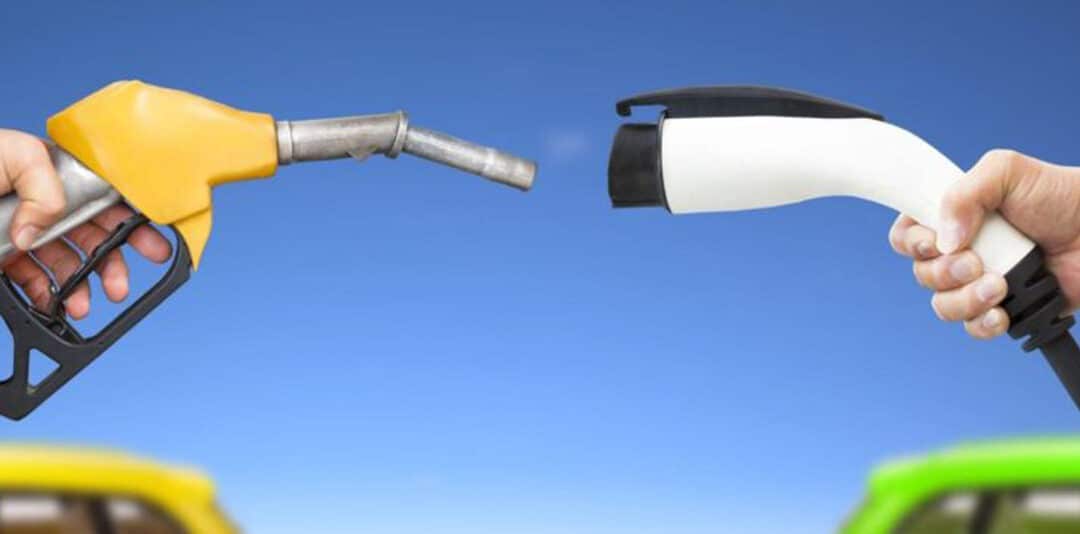
by DavidSpratt | Mar 2, 2018 | Energy
True story. An employee took the flash new company Electric Vehicle (EV) up North on a sales trip. On the way home, they realised that the battery charge was running out so stopped in a small town to find a charging point. There was, inevitably, no charging station for electric vehicles so they rang the tow company and got a ride home alongside a towie with bad breath and even worse body odour. Back at work, the boss pointed out the switch that turned the hybrid vehicle back to petrol power.
My point? Electric Vehicles (EV’s) are still a bit of a mystery both to their users and to the people making the financial decisions.
Add to this the element of uncertainty of buying a car from a man who straps his second-hand sports cars to a space rocket and whose loss-making company can’t actually deliver a simple sedan on time and you must have to have reservations around updating your fleet from petrol to electric.
Despite the uncertainty let’s examine the business case for electric vehicles.
Business Case for Electric Vehicles
At a recent presentation to energy sector leaders, Gary Holden, CEO at Pulse Energy and a well-known thought leader and innovator, proposed that it costs, all up, around $10 to travel 100kms in a car and that it has pretty much always done so.
Simply put, it cost the same for a Model T in 1920 to travel 100km as it did for a Honda Accord to travel the same distance in 1990. The reason? Internal combustion engines are, and always have been, between 25% and 30% efficient. Any gains achieved through advances in technology are quickly swallowed up by faster travel – or slower if you are travelling on that great carpark known as the Auckland motorway network.
Along come electric vehicles and a very simple idea. Capture the energy of braking and stuffing it into a battery and 30% efficiency suddenly rises to 80%, 3 times more efficient than a petrol engine.
Cheap Electricity Provides Strategic Advantage
Now add the New Zealand strategic advantage, cheap renewable hydropower, and the comparative cost of electricity to that of a barrel of oil, roughly US$40 on average for the last forty-five years, is now almost exactly half that at $20. “In other words,” says Gary “for oil to compete with electric it would have to permanently return to pre- 1973 prices.”
Is it any wonder we are seeing major oil producers falling over themselves to drop the price of oil and investing in massively polluting extraction of shale oil and fracking in order to slow down the inevitable march of electric vehicles into the market?
Barriers to Adoption of Electric Vehicles Disappearing
So, what is stopping New Zealand’s companies from rapidly switching to electric vehicles, say by 2020? Not a heck of a lot according to Gary.
He believes, and I agree, that by 2020 the premium we pay for electric cars will be a thing of the past. The high running cost, inefficiency and plain nasty polluting qualities of petrol vehicles will mean that electric vehicle leaseholders will see higher residual prices being offered at the end of their three-year term (2023) Combine that with the electric vehicles superior efficiency, low operating cost and ever-increasing range and companies should be looking very, very hard at their vehicle choices.
There is, however, more to this equation than a simple cost per kilometre and residual value. Our electricity market is complex, riven with contradictions and slow to respond to demand drivers like electric vehicles. Next month I will have a close look at the forces in the New Zealand market that will either hasten or slow electric vehicle uptake.
This article is part 1 of a series in which I will explore the EV future over the coming months. Part 2 discusses buying electric vehicles.
Read more electric car analysis in the New Zealand/Australia context, or take a look at these electric car reviews.
by DavidSpratt | Apr 18, 2016 | Case Studies
When you have a global supply chain delivering premium live seafood and chilled fresh fish to domestic and overseas markets, there is little room for communications, business process or system errors.

Aotearoa Fisheries Limited is the largest Maori-owned fisheries company and it’s been harvesting, processing and delivering live, chilled and frozen seafood since its establishment in 2004. It harvests, processes and delivers chilled, canned and frozen seafood and ready to eat products to over 20 countries.
For the past five years Aotearoa Fisheries has been working with utilities procurement specialists, Total Utilities, to ensure that their telecommunications/ICT, natural gas, electricity suppliers are providing high levels of service at the best price.
Independent ICT Strategic Review
When David Spratt, Director of ICT at Total Utilities, carried out a strategic review of Aotearoa Fisheries IT architecture, hardware and management in 2015, he brought 30 years of experience in senior ICT roles to the table.
Aotearoa Fisheries had recently moved to a new IT provider supplying Infrastructure as a Service (IaaS), with one division retaining and maintaining its own servers. The business was interested in comparing the two approaches as well as benchmarking costs against other providers in the market.

Photo by Aotearoa Fisheries
(more…)

by guest_hans | Mar 29, 2016 | Energy
A Brief History of the Emissions Trading Scheme (ETS) in New Zealand
In 2008, the New Zealand Government introduced an emissions trading scheme (ETS) for greenhouse gases. It required upstream energy suppliers, the users of imported fossil fuels, and industries with CO2 process emissions, to surrender a New Zealand Emissions Unit, for every tonne of greenhouse gas (GHG) that would be subsequently be emitted. Upstream suppliers pass on the costs of these emission units to downstream users.
The Government was aware that energy-intensive, trade-exposed industries would suffer competitively if they were fully exposed to this cost. It therefore provided a free allocation of up to 90% of the emission units required to these industries. It provided a price cap of $25 for an emissions unit.

Geothermal power Station, near Taupo New Zealand
In 2009, the incoming Government made some amendments to the ETS, in recognition of the effects of the global financial crisis. It reduced the requirement to surrender emission units to one unit for every two tonnes of GHG emitted. It delayed indefinitely the planned phase-out of the free allocation of units to energy-intensive, trade-exposed industries.
(more…)
by chris | Aug 3, 2015 | Energy
The news announced this morning ends the worst kept secret of the electricity industry in New Zealand. Months of speculation has been concluded with this morning’s announcement that NZAS will continue to operate Tiwai Point with extra hedge contracts being provided by Contact Energy and Genesis Energy. The deal will provide NZAS with greater certainty if Meridain’s hydro lake storage drops to low levels during summer periods in the future. This will no doubt have a flow on effect to the commercial market as there is now certainty regarding the future of Manpouri and the ongoing viability of thermal plants such as Contact’s Otahuhu B and Genesis’ Huntly power stations.

Energy News has posted the following:
New Zealand Aluminium Smelters has opted to retain its contracted supply cover with Meridian Energy.
A variation to the agreement between the two companies commits Meridian to cover the full 572 MW currently used at the smelter from January 1, 2017. The new deal will see that cover provided at more competitive rates for the smelter than would have applied if NZAS chose to rely on the previous arrangement.
“This variation will give the smelter the flexibility to operate at current production levels for the full contract period should it want to and provide Meridian with an improved overall price for its electricity,” chief executive Mark Binns says.
The Tiwai Point smelter at Bluff is the country’s biggest electricity consumer. The site can use up to 630 MW of power but has been running only three of its four pot lines since early 2012 when record-low South Island hydro storage sent wholesale prices soaring.
Tiwai is currently using about 572 MW annually, fully-hedged under a new lower-priced deal it agreed with Meridian in August 2013.
But that deal, signed in the lead-up to Meridian’s listing, required the smelter to reduce its cover to 400 MW from January 2017 or have its entire supply return to the higher electricity prices set in a new contract settled in 2007.
Contact
Under the deal announced today, the price on that supply will increase. Meridian describes it as a “blend” of the agreed post-2017 price on 400 MW of load and a more market-related price for the balance. Prices also increase if the New Zealand dollar value of global aluminium prices rise above certain levels.
Today’s deal will also see Contact Energy provide Meridian with a financial contract for 80 MW of supply to help guarantee its hedged position.
The Contact deal will apply for at least four years and a maximum of 14 years commencing from January 2017. It also includes provision of associated risk management from Meridian to Contact under certain limited circumstances.
Genesis Energy has also agreed to provide Meridian with 50 MW of financial cover from Huntly for two years starting in 2017.
Meridian is committed to cover Tiwai Point’s electricity usage at current production levels through to 2030, but NZAS retains all its termination rights from the 2013 round of negotiations, which includes a 12-month notice of termination that can be given any time from January 1, 2017.
New Zealand Aluminium Smelters has said it wants to keep operating here and has been sounding out other generators about providing a hedge over the other 172 MW of supply. It previously negotiated an additional summer supply from Meridian but was unable to utilise that due to the impact on the smelter’s transmission bill.
Predictions
More than 60 per cent of participants in an Energy News poll had expected the smelter to keep operating at 572 MW. Just 13 per cent thought the smelter would close in 2017; 25 per cent thought NZAS would drop its load to 400 MW.
Twenty-two per cent of participants thought a deal would be announced with Contact and Genesis – the two companies most exposed to lower wholesale prices if the smelter was to reduce its demand.
On the plus side for the smelter, the weaker New Zealand dollar is offsetting much of the recent price weakness. Longer term, changes to transmission pricing proposed by the Electricity Authority should also deliver big savings for the site.
(more…)
by Jonathan Gardiner | Jun 2, 2015 | Energy
The Gas Industry Co has issued the latest update of The New Zealand Gas Story – the State and Performance of the New Zealand Gas Industry. The third edition of this publication can be found here.

Notable elements of the update are:
• The Report updates current statistics and other information from a variety of published sources. Due to the staggered nature of formal disclosures the Distribution section will be updated when all latest Distribution Network disclosures are to hand at the end of April.
• The Gas Pricing section incorporates extended discussion of the wholesale gas market with additional information flowing from the operation of the wholesale trading platform.
• A variety of recent reports have fed into extended discussion of gas supply and demand scenarios, and the opportunities and challenges they may present.
Overall, the Report notes that the gas industry continues to be in good health, although it faces some headwinds:
• The total market has grown on the back of a return to full three-train methanol production at Methanex.
• Increased petrochemical demand is offset by a continuing trend towards a gas ‘peaking’ role in electricity generation, with a resulting further reduction in gas use for baseload generation. At the same time broader retail market demand is relatively flat.
• Fall in international oil prices is inevitably affecting New Zealand upstream investment, especially because New Zealand exploration is targeted mainly at oil. Smaller explorers and producers are particularly affected. Oil prices will continue to change within the longer horizons of the New Zealand gas story, however, and new and large investors continue to be attracted to New Zealand through the block offers regime.
• An intensive exploration effort in the last few years has to date not yielded the significant new discoveries that many hoped for. But the domestic gas markets have seen a lift in reported reserves levels in the past year from further development of existing fields, and new figures on ‘contingent’ reserves from those fields signal significant further potential.
• Downstream, gas consumers continue to be well-served and customer numbers are growing. Consumers have a good and expanding choice of retailers with recent new entrants strengthening an already competitive market. And the emsTradepoint wholesale market is gaining traction, with increasing market participants and volumes traded.
• Existing gas infrastructure is expected to carry the industry forward in the foreseeable future, pending any future step change in the form of a major new discovery or a substantial new demand source.
For more information about the Gas Industry Co please click here.







